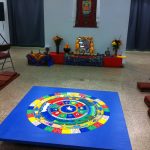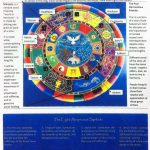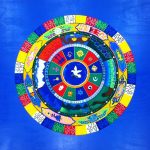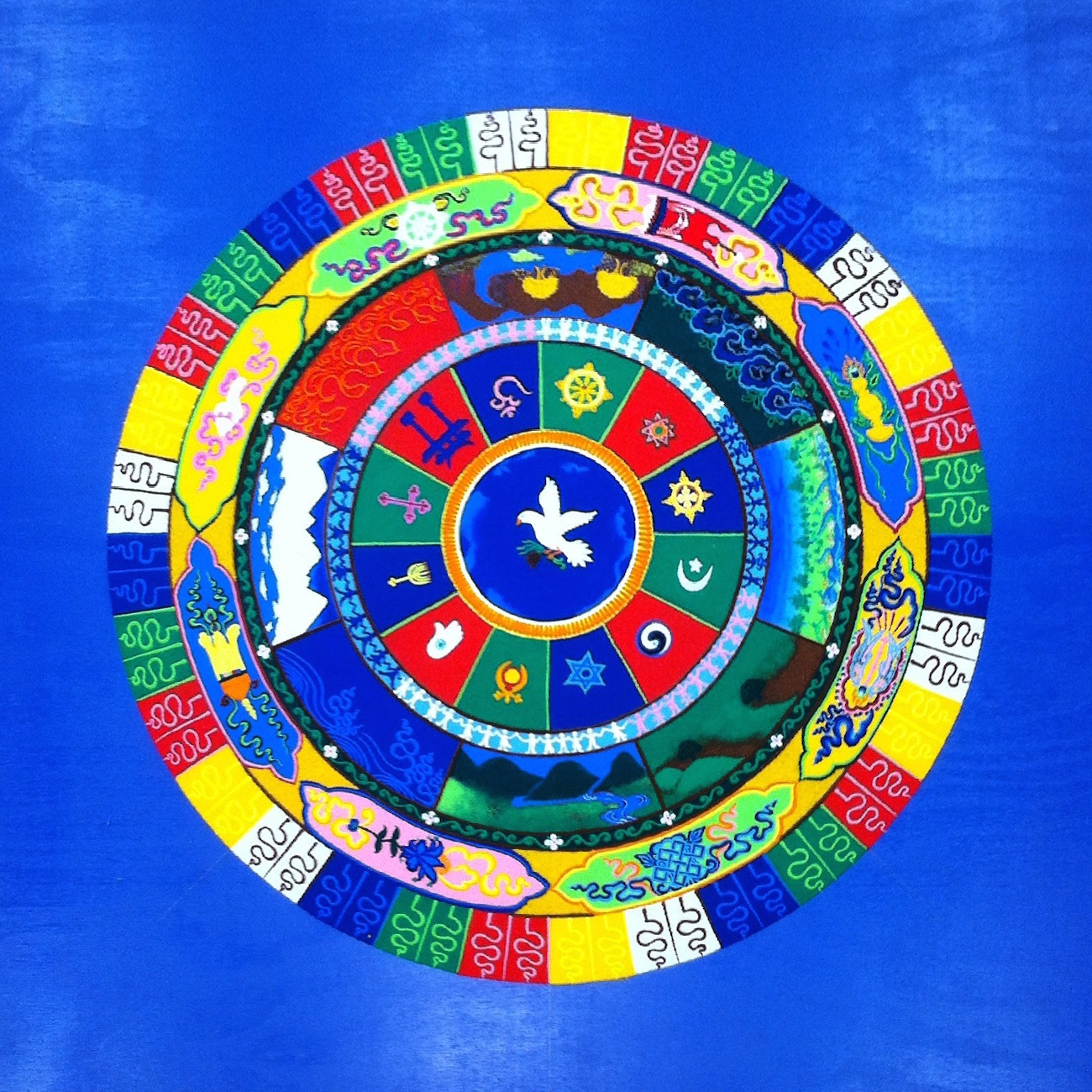
Drepung Gomang Monastery
Mandala of World Peace
September 21, 2014
Miller Beach, Indiana
Photo by Lucas Livingston, ancientartpodcast.org/88
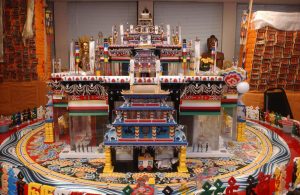
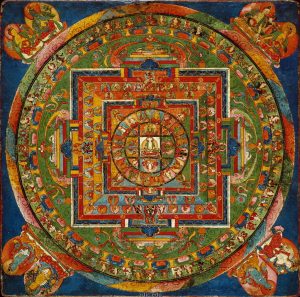
Tibet
Mandala
18th/19th century
Opaque watercolor and gold on cotton and wood
35.2 x 35.2 x 5.4 cm
The James W. and Marilynn Alsdorf Collection (151.1996)
From Pal, Pratapaditya, A Collecting Odyssey, 1997, fig. 210.
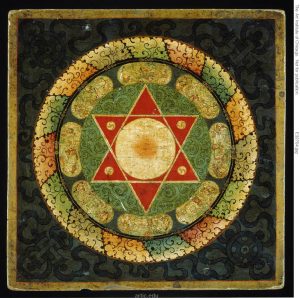
Tibet
Mandala
18th/19th century
Opaque watercolor and gold on wood
26.7 x 26.7 x 12.8 cm (10 1/2 x 10 1/2 x 5 in)
The James W. and Marilynn Alsdorf Collection (150.1996)
Gallery label: Mandala, literally meaning “circle,” is a diagram of the spiritual universe that is used as a meditational device. The circle encloses a sacred area, into which the devotee enters via meditation. The only figures shown in this abstract mandala are the demons who inhabit the charnel ground within the circle of flames. The central hexagon is a yantra (a meditation device) that symbolizes the combination of masculine and feminine aspects, shown as two overlapping triangles. Their union induces cosmic harmony. A circle connects the points of the hexagon, symbolizing the unification of the souls of everything living and divine.


